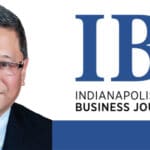
Buffett extols “The American Tailwind” and urges “forget the trees”
Mickey Kim / March 8, 2019
Berkshire Hathaway CEO Warren Buffett’s annual letter to shareholders (posted on the last Saturday of February) always contain valuable historical perspective and timeless investment advice. The 2018 edition certainly didn’t disappoint.
Focus on the Forest—Forget the Trees
Buffett noted investors sometimes “obsess on the details of our many and diverse businesses—our economic ‘trees,’ so to speak.” He described this analysis as both “mind numbing” and futile, given Berkshire owns “specimens ranging from twigs to redwoods,” a few of which are “diseased and unlikely to be around a decade from now,” but many more “destined to grow in size and beauty.”
Instead, he said to focus on Berkshire’s “forest,” which contains “five ‘groves’ of major importance.”
Berkshire’s most valuable grove is the many dozens of non-insurance businesses it controls (usually 100%, including Burlington Northern Santa Fe, Berkshire Hathaway Energy and Dairy Queen), which earned $16.8 billion in 2018 after all expenses. He mocked analysts and CEOs who tout measures like adjusted EBITDA (Earnings Before Interest, Taxes, Depreciation and Amortization), which inflate reported profits by excluding costs that are “all-too-real.”
Buffett said Abraham Lincoln once mused: “If you call a dog’s tail a leg, how many legs does it have?” He answered his own query: “Four, because calling a tail a leg doesn’t make it one.”
Next is Berkshire’s portfolio of stocks (market value of $173 billion at year-end), typically 5% to 10% ownership positions in a diverse group of mega-companies like Apple, Bank of America and Coca-Cola that paid dividends to Berkshire of $3.8 billion in 2018.
The third grove is four companies Berkshire controls with other parties, including Kraft Heinz (more in my next column), Berkadia, Electric Transmission of Texas and Pilot Flying J.
The fourth grove is $132 billion in cash equivalents. Speaking of his “uncertainty fund,” Buffett said, “Berkshire will forever remain a financial fortress. In managing, I will make expensive mistakes of commission and will also miss many opportunities, some of which should have been obvious to me. But I will never risk getting caught short of cash.”
The fifth grove is its property/casualty (“P/C”) insurance business, consisting of National Indemnity and GEICO. Buffett likes the “collect now-pay later” business model whereby insurers receive premiums upfront and pay claims later— sometimes much later. Meanwhile, insurers can invest this “float” for their own benefit. The premiums Berkshire received usually exceeded expenses and eventual losses, resulting in an underwriting profit that meant Berkshire was actually paid to hold the float it was wildly successful investing.
Excessive debt kills
Buffett observed many “venturesome” CEOs are comfortable using copious amounts of debt as it “juices the returns” for equity owners, most of the time. However, “at rare and unpredictable intervals, credit vanishes and debt becomes financially fatal. A Russian roulette equation—usually win, occasionally die—may make financial sense for someone who gets a piece of a company’s upside, but does not share it its downside. Rational people don’t risk what they have and need for what they don’t have and don’t need.”
The American Tailwind
Buffett noted March 11 will mark the 77th anniversary of his first investment as an 11-year old capitalist; all $114.75 he had accumulated since age six in three shares of Cities Service preferred stock.
He recalled in that spring of 1942, the U.S. and its allies were suffering heavy losses in a war the U.S. had only recently entered. According to Buffett, “despite the alarming headlines, almost all Americans believed on that March 11 that the war would be won. Leaving aside congenital pessimists, Americans believed that their children and generations beyond would live far better lives than they themselves had led.”
Indeed, Buffett calculated that same $114.75 invested in the S&P 500 would have grown to $606,811 by the end of January 2019, an astounding gain of 5,288-for-1. Further, if he had been scared by the gloomy headlines and instead bought 3 ¼ ounces of gold, that asset would be worth $4200 today, less than 1% of what would have been realized by investing in the S&P 500.
In closing, “Charlie (Vice-Chairman Munger) and I happily acknowledge that much of Berkshire’s success has simply been a product of what I think should be called The American Tailwind. It is beyond arrogance for American businesses or individuals to boast that they have ‘done it alone.’ The tidy rows of simple white crosses at Normandy should shame those who make such claims.”
The opinions expressed in these articles are those of the author as of the date the article was published. These opinions have not been updated or supplemented and may not reflect the author’s views today. The information provided in these articles does not provide information reasonably sufficient upon which to base an investment decision and should not be considered a recommendation to purchase or sell any particular stock or other investment.
Subscribe
Subscribe to stay up to date with the latest news, articles and newsletters from Kirr Marbach.












